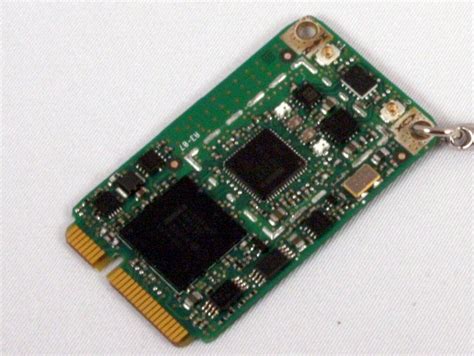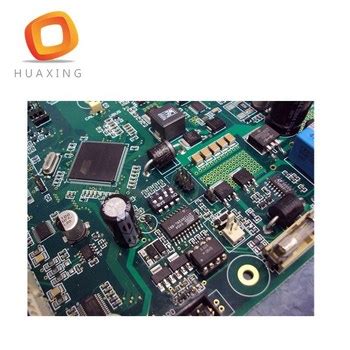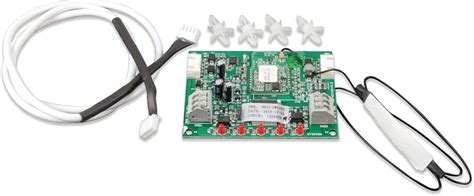Introduction to Wi-Fi 6 and 802.11ax
Wi-Fi 6, also known as 802.11ax, is the latest standard in wireless networking technology. It offers significant improvements over its predecessor, Wi-Fi 5 (802.11ac), in terms of speed, capacity, and efficiency. Wi-Fi 6 is designed to handle the increasing demand for high-speed wireless connectivity in dense environments, such as airports, stadiums, and offices.
Key Features of Wi-Fi 6
- Increased Speed: Wi-Fi 6 offers theoretical speeds of up to 9.6 Gbps, compared to 3.5 Gbps in Wi-Fi 5.
- Improved Efficiency: With features like OFDMA and MU-MIMO, Wi-Fi 6 enables more efficient use of the wireless spectrum, allowing more devices to connect simultaneously without compromising performance.
- Lower Latency: Wi-Fi 6 reduces latency, making it ideal for applications that require real-time communication, such as gaming and video conferencing.
- Enhanced Security: Wi-Fi 6 supports the latest security protocols, such as WPA3, which provides stronger encryption and authentication mechanisms.
PCB Design Considerations for Wi-Fi 6
When designing PCBs for Wi-Fi 6 devices, several factors must be taken into account to ensure optimal performance and reliability.
Signal Integrity
Signal integrity is crucial in high-speed wireless communication. To maintain signal integrity, consider the following:
- Impedance Matching: Ensure proper impedance matching between the antenna and the RF circuitry to minimize reflections and signal loss.
- Trace Routing: Route high-speed traces carefully to avoid signal degradation due to crosstalk and electromagnetic interference (EMI).
- Grounding: Implement a solid grounding strategy to minimize ground bounce and ensure stable reference planes.
Antenna Design
The antenna is a critical component in Wi-Fi 6 devices. Consider the following when designing antennas:
- Antenna Type: Choose the appropriate antenna type (e.g., patch, dipole, or PIFA) based on the device form factor and performance requirements.
- Antenna Placement: Position the antenna to minimize interference from other components and ensure optimal radiation patterns.
- Antenna Tuning: Tune the antenna to achieve the desired frequency response and impedance matching.
Power Management
Efficient power management is essential for battery-powered Wi-Fi 6 devices. Consider the following:
- Power Saving Modes: Implement power-saving modes, such as Target Wake Time (TWT), to reduce power consumption during idle periods.
- Voltage Regulation: Use efficient voltage regulators to minimize power loss and ensure stable power supply to the RF circuitry.
- Heat Dissipation: Design the PCB layout to facilitate heat dissipation, preventing thermal issues that can affect performance and reliability.

802.11 Standards Overview
The 802.11 family of standards has evolved over the years to meet the growing demand for wireless connectivity. Here’s a brief overview of the main 802.11 standards:
| Standard | Frequency Band | Max. Data Rate | Key Features |
|---|---|---|---|
| 802.11a | 5 GHz | 54 Mbps | OFDM modulation |
| 802.11b | 2.4 GHz | 11 Mbps | DSSS modulation |
| 802.11g | 2.4 GHz | 54 Mbps | OFDM modulation, backward compatible with 802.11b |
| 802.11n | 2.4 GHz, 5 GHz | 600 Mbps | MIMO, wider channels (40 MHz) |
| 802.11ac | 5 GHz | 3.5 Gbps | MU-MIMO, wider channels (80, 160 MHz) |
| 802.11ax | 2.4 GHz, 5 GHz | 9.6 Gbps | OFDMA, MU-MIMO, 1024-QAM, Target Wake Time |

Frequently Asked Questions (FAQ)
-
What is the main difference between Wi-Fi 6 and Wi-Fi 5?
Wi-Fi 6 offers higher speeds, improved efficiency, and lower latency compared to Wi-Fi 5. It also introduces new features like OFDMA and Target Wake Time to better support dense environments and battery-powered devices. -
Is Wi-Fi 6 backward compatible with older devices?
Yes, Wi-Fi 6 is backward compatible with devices that support previous 802.11 standards. However, to take full advantage of Wi-Fi 6 features, both the access point and the client device must support the 802.11ax standard. -
What is the significance of OFDMA in Wi-Fi 6?
OFDMA (Orthogonal Frequency Division Multiple Access) allows multiple devices to share the same channel simultaneously, improving efficiency and reducing latency. This is particularly beneficial in dense environments with many connected devices. -
How does Wi-Fi 6 improve security?
Wi-Fi 6 supports the latest security protocol, WPA3, which offers stronger encryption and authentication mechanisms compared to its predecessor, WPA2. WPA3 includes features like Simultaneous Authentication of Equals (SAE) and Enhanced Open, which protect against password guessing and unsecured public networks. -
What are some key considerations when designing PCBs for Wi-Fi 6 devices?
When designing PCBs for Wi-Fi 6 devices, it’s essential to focus on signal integrity, antenna design, and power management. This includes ensuring proper impedance matching, careful trace routing, efficient voltage regulation, and optimal antenna placement and tuning. Additionally, implementing a solid grounding strategy and facilitating heat dissipation are crucial for maintaining performance and reliability.

Conclusion
Wi-Fi 6 represents a significant advancement in wireless networking technology, offering faster speeds, improved efficiency, and enhanced security. When designing PCBs for Wi-Fi 6 devices, it’s crucial to consider factors such as signal integrity, antenna design, and power management to ensure optimal performance and reliability.
By understanding the key features of Wi-Fi 6 and the 802.11 family of standards, engineers can make informed decisions when developing wireless products that meet the growing demand for high-speed, low-latency connectivity in dense environments.

No responses yet